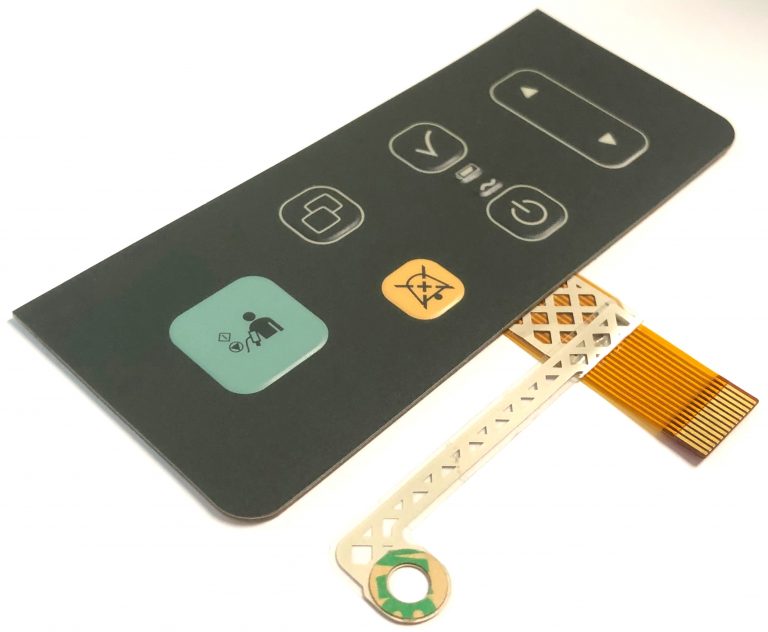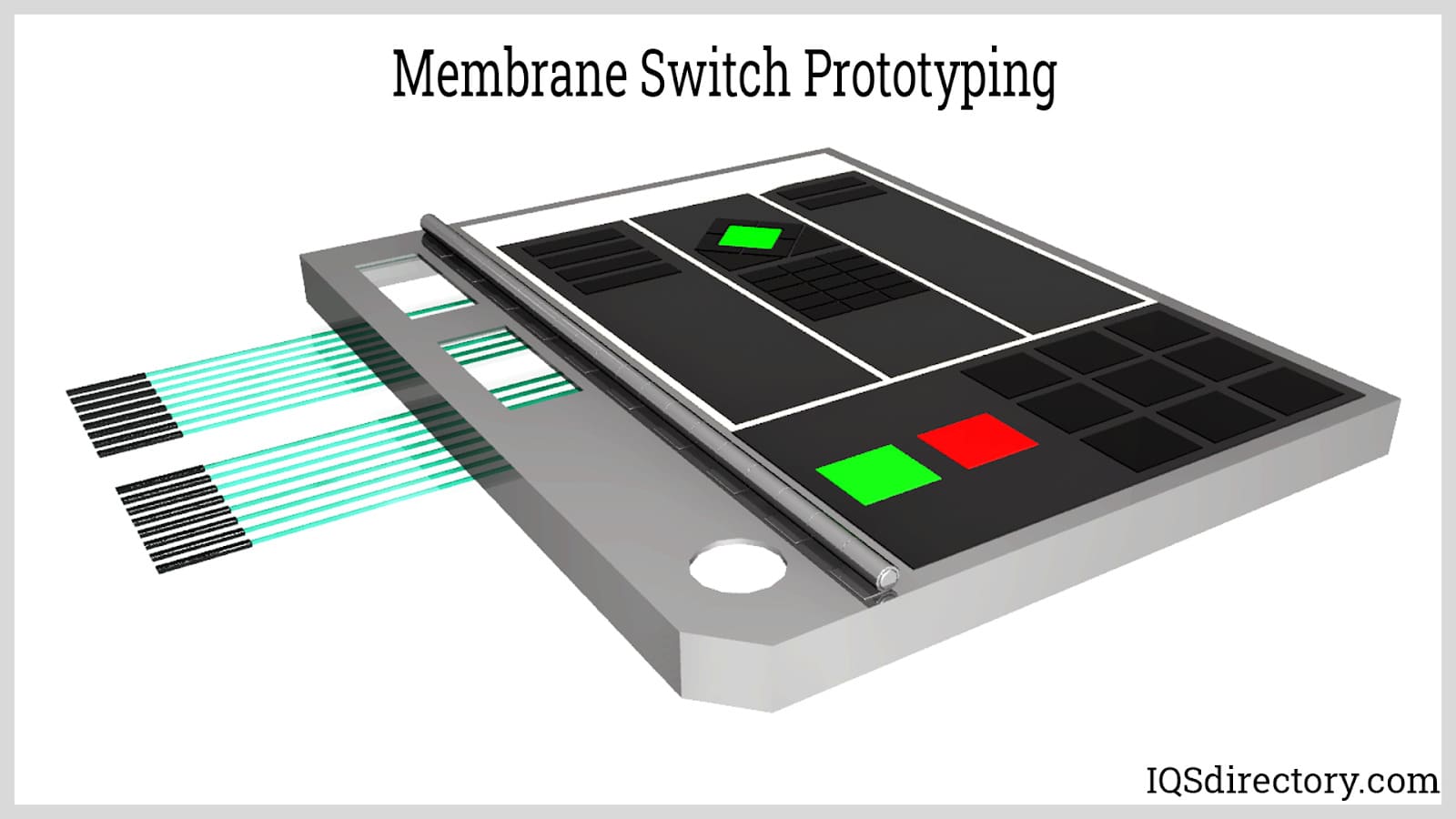An creative membrane switch manufacturer can offer next-gen features and materials.
An creative membrane switch manufacturer can offer next-gen features and materials.
Blog Article
Everything About Membrane Layer Switch: Comprehending Its Design and Capability
When you assume about the control interfaces in modern-day tools, membrane layer buttons often come to mind. Allow's discover what sets membrane layer changes apart from other control systems.
What Are Membrane Layer Buttons?

Their smooth nature makes them easy to tidy and immune to dust and dampness, a vital attribute in several atmospheres. Membrane layer buttons can likewise be personalized pertaining to form, size, and graphics, enabling suppliers to develop distinct interfaces customized to particular products. Plus, they're lightweight and slim, which aids in minimizing the general bulk of devices. On the whole, membrane buttons play a considerable role in enhancing customer experience across a vast variety of applications.
Just How Membrane Switches Job
When you push a trick on a membrane button, it activates a straightforward yet effective system. The top layer, frequently made from adaptable material, presses down onto a conductive layer below it. This action bridges the void in between conductive traces, completing an electrical circuit. As quickly as the circuit closes, it sends a signal to the gadget's controller, which interprets your input.
You'll notice that the responsive comments differs based upon the button layout, offering either a soft click or a more noticable response. As soon as you launch the key, the membrane returns to its original setting, reopening the circuit and stopping the signal. This process occurs almost immediately, guaranteeing a receptive user experience.
Membrane buttons are popular due to their longevity and resistance to dirt and moisture, making them optimal for different applications, from household devices to medical devices. Understanding this procedure helps you value their prevalent usage.
Secret Elements of Membrane Layer Switches
Comprehending the vital parts of membrane layer buttons is essential for realizing their capability and design. The protective layer shields against ecological variables and use, expanding the button's life-span. By understanding these components, you'll obtain insight into just how membrane layer switches over operate and their value in different applications.
Products Utilized in Membrane Layer Switch Over Style
The performance and sturdiness of membrane switches greatly rely on the materials made use of in their style. You generally run into polyester and polycarbonate as primary substratums as a result of their excellent toughness and flexibility. These products withstand scratches and chemicals, making them perfect for demanding atmospheres.
The conductive layers commonly make use of silver or carbon, selected for their integrity and conductivity. membrane switch manufacturer. Silver gives premium efficiency, while carbon is an affordable option. For the overlay, you may think about a matte or shiny surface, relying on your visual needs and user experience
Make certain to select adhesives that withstand ecological aspects like temperature and moisture. Choosing the appropriate products will guarantee your go to my site membrane layer button stands the test of time.
Layout Considerations for Membrane Layer Buttons
While developing membrane buttons, it's important to take into account various factors that influence their functionality and customer experience. Begin by focusing on the design and switch dimension; make particular they're user-friendly and simple to navigate.
Don't forget the visuals design; clear labeling and shade contrast are considerable for visibility. Confirm your style suits ecological aspects, like dampness or temperature level variations, which could affect performance. Keep in mind the relevance of screening prototypes with genuine individuals to collect comments and make essential modifications. This repetitive process aids you refine the style, confirming it satisfies both functional and aesthetic requirements efficiently. By meticulously thinking about these aspects, you'll create a membrane layer switch that improves use and complete satisfaction.
Applications of Membrane Buttons
Membrane switches are versatile elements found in various applications, from industrial devices to customer electronic devices. You'll see their influence in devices that require long lasting interfaces and in gadgets that gain from sleek styles. Recognizing these applications helps you value the capability and functionality of membrane layer buttons in everyday innovation.
Industrial Devices Use
When you're looking to boost the functionality of industrial devices, membrane layer buttons provide a dependable solution that combines longevity with easy to use design. These buttons are best for severe atmospheres, supplying resistance to dirt, dampness, and chemicals. Welcome membrane switches to streamline your operations and enhance total performance.
Consumer Electronics Integration
In the domain of consumer electronic devices, membrane layer switches play a necessary duty in improving individual communication and tool functionality. Membrane buttons likewise ensure durability and resistance to dust and wetness, prolonging the life expectancy of your electronics. By selecting membrane layer switches, you improve not simply the performance yet likewise the design of your devices, making day-to-day interactions smooth and enjoyable.
Advantages and Negative Aspects of Membrane Layer Switches
While membrane layer switches use a range of benefits, they likewise come with some downsides that you ought to consider. One considerable advantage is their small style, making them excellent for space-constrained applications.

Membrane layer switches can have a shorter life expectancy contrasted to mechanical buttons, particularly under heavy usage. They can likewise be less tactile, which could affect customer comments throughout procedure. Stabilizing these pros and cons will help you establish if membrane buttons are the right fit for your task.
Frequently Asked Inquiries
Exactly How Lengthy Do Membrane Changes Normally Last?
Membrane switches over generally last in between 5 to 10 years, relying on usage and environmental problems. You'll intend to examine variables like wear, direct exposure to dampness, and temperature level variations to determine their long life effectively.
Can Membrane Switches Over Be Custom-made for Particular Designs?
Yes, you can tailor membrane layer switches to fit certain layouts (membrane switch manufacturer). You'll have the liberty to select shades, look at this site forms, and layouts that match your job's demands, guaranteeing they blend flawlessly with your overall visual
What Is the Price Range for Membrane Layer Change Manufacturing?
The expense range for membrane layer switch manufacturing normally falls in between $1 and $10 each, depending on elements like layout complexity, quantity, and materials. You can obtain quotes from manufacturers to discover the best alternative.

Are Membrane Switches Over Waterproof or Immune?
Membrane switches can be created to be waterproof or immune, relying on materials used and building and construction techniques. If you need them for damp atmospheres, guarantee you define those needs throughout the style procedure.
How Do Membrane Layer Changes Compare to Standard Buttons?
Membrane layer switches are usually thinner and much more flexible than conventional buttons, offering a streamlined layout. They're commonly less complicated to clean up and integrate, but may not provide the tactile responses you're utilized to with see this website mechanical options.
Final thought

Report this page